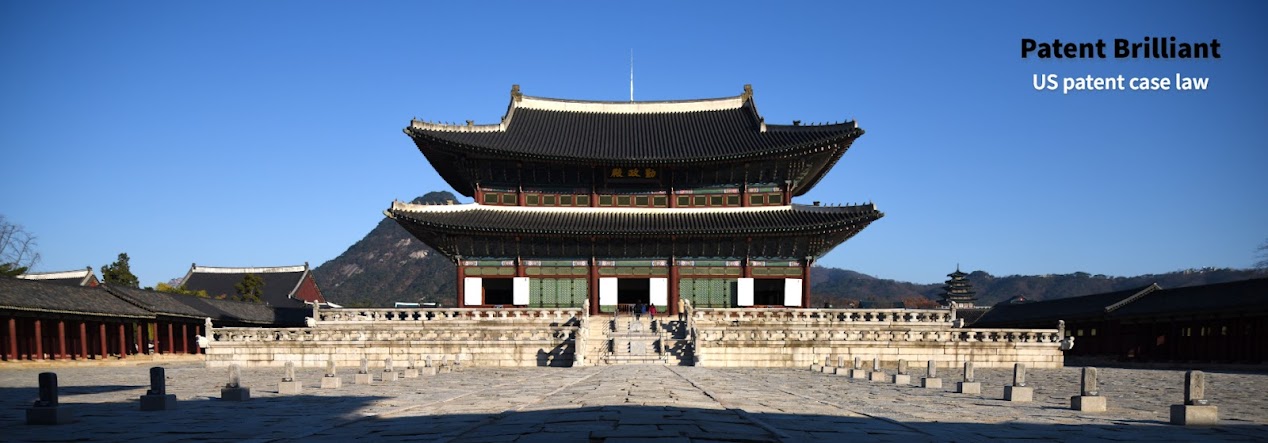Littelfuse,
Inc. v. Mersen USA EP Corp., No. 21-2013 (Fed. Cir. 2022)
본 사건은
claim construction 에 있어서, 명세서 기재사항에 의하여 claim element 가 한정해석 될 수 있는지를 판단한 CAFC 의
판결이다.
*** 본
판결에는 claim construction 시, 명세서 기재사항
및 출원경과 사항을 (1) 참작하여 해석할 것인지, (2) 한정해석
할 것인지에 관한 다양한 CAFC 판례를 인용하고 있다. 그러한
판결에 주목하여 본 판결을 이해하는 것을 추천드린다.
Littelfuse 는 US 9,564,281 의 특허권자인데, ’281 특허는 “fuse end cap for providing an electrical connection between a fuse and an electrical conductor” (전선의 fuse 와 electrical conductor 간의 연결을 제공하기 위한 구성) 에 관한 것이다. Littelfuse 는 Mersen 이 해당 특허를 침해하였다고 소송을 제기하였다. ’281 특허의 명세서는 end cap 에 관한 3가지 실시예를 기재하고 있는데, (1) machined end cap, (2) stamped end cap, (3) assembled end cap 이다.
명세서 기재사항에 따르면, (1) machined end cap 과 (2) stamped end cap 은 “single piece of any suitable, electrically conductive material” 로 구성되며, 그런데 (3) assembled end cap 은 “two separate pieces of any suitable, electrically conductive material” 로 구성된다. (3) 실시예를 구성함에 있어서, terminal 과 mounting cuff 는 상이한 물질 (separate pieces of material) 을 사용한다.
CAFC 재판부의 판단의 이슈가 된 claim 10 은 다음과 같다:
10. A fuse assembly comprising:
a first fuse end cap having a mounting cuff defining a first cavity and a terminal defining a second cavity;
a fastening stem that extends from the mounting cuff of the first fuse end cap and into the second cavity of the terminal;
a second fuse end cap having a mounting cuff defining a first cavity and a terminal defining a second cavity, and a fastening stem that extends from the mounting cuff of the second fuse end cap and into the second cavity of the terminal . . . .
Claim 10
의 종속항 claim 19, 20 은 다음과 같다:
19. The fuse end cap of claim 10, wherein each fuse end cap is machined form a single, contiguous piece of conductive material.
20. The fuse end cap of claim 10, wherein each fuse end cap is stamped from a single, contiguous piece of conductive material.
심사관은 심사과정에서, restriction requirement 를 발행했는데, 그 이유는 상기 3건의 실시예는 distinct species 관계에 있다고 지적하였다. 이에 대하여, Littelfuse 는 assembled end cap 을 election 하였고, 이후, 심사관은 claim 8 - 9 와 claim 19 - 20 을 심사 제외하였다. PTO practice 에 의하면, 해당 종속항에 대하여 심사를 거쳐 generic claim 이 등록 가능한 경우, 제외 했던 species claim 을 회복시킨다. (즉, Littelfuse 는 물론 USPTO 도 end cap 의 3가지 실시예는 서로 다른 물품 (구성) 임을 확인했다는 의미이다.)
심사관은 상기 종속항 (8. 9, 19, 20) 즉, single piece of material 로
된 end cap 이 claim 1, 10 (end cap 이
single piece of material 이나 separate
piece of material 로 한정되지 않은 청구항) 과 양립할 수 있는 것으로 판단하였다.
1심
재판부는 “fastening stem” 을 “stem that
attaches or joins other components” 로 claim
construction 하면서, claim 1, 10 이 single-piece apparatus 즉, end cap formed
from a single piece of material 을 포함하지 않는 것으로 해석하였다.
이러한 1심 재판부의 claim construction 에 대하여, 2심 재판부는 de novo 기준으로 검토하되, 관련된 사실관계 (subsidiary factual findings) 는 clear error 기준으로 검토한다.
CAFC 는
1심 재판부의 claim 1, 10 이 multi-piece apparatus 만을 포함한다는 claim
construction 에 동의하지 않는다. Claim term 은 특허 출원 시점의 PHOSITA 가 이해하는 통상의 의미로 해석된다. Claim 과
명세서 기재사항 중에 용어가 어떻게 사용되었는지가 PHOSITA 가 이해하는 통상의 의미가 무엇인지에
대한 강한 증거이다. Phillips v. AWH Corp., Fed. Cir. (2005)
Claim structure
는 그러한 과정에서의 이해를 명백하게 해준다. 독립항 1,
10 은 fuse end cap 이 3개의 elements – mounting cuff, terminal, fastening stem – 를 포함하는 것으로
기재하고 있고, 그의 종속항 8, 9, 19, 20 은 claim 1, 10 을 추가로 한정하면서 end cap 이 “from a single, contiguous piece of conductive material” 로 되는
것으로 기재하고 있다.
특허법 상의 정의 규정에 따라, 독립항은 그의 종속항보다 그 권리범위가 넓고, 종속항이 발명의 특정
실시예로 읽힌다면, 그의 독립항은 필연적으로 종속항에서 규정한 특정 실시예를 반드시 포함해야 한다. Baxalta Inc. v. Genentech, Inc., Fed. Cir. (2020) 그렇지 않다면, 종속항은 권리범위가 없고, 그렇게 되면 그 종속항은 존재 의미를
잃는다. 그러한 결과로 되는 claim construction 은
지양 되어야 만 한다. Intellectual Ventures I LLC v. T-Mobile USA,
Inc., Fed. Cir. (2018)
본 사건의 CAFC 재판부는 presumption of differentiation 이론이 변경을 허락하지 않는 (hard and fast) 규정이 아닌 점을 주지한다. Seachange Int’l, Inc. v. C–COR, Inc., Fed. Cir. (2005) 실제로, claim differentiation 에 의하여 성립된 추정은 명세서 기재사항 내지 출원경과 사항에 의하여 극복될 수 있다. Retractable Techs., Inc. v. Becton, Dickinson, and Co., Fed. Cir. (2011)
그러나, 본 사건에 있어서 Littelfuse 의 claim construction – claim 1, 10 의 end cap 이 single piece apparatus 를 포함한다는 해석 – 은 명세서 기재사항에 의하여 뒷받침 된다. 더욱이, Mersen 의 claim construction – claim 1, 10 의 end cap 이 single piece apparatus 를 포함하지 않는다는 해석 – 이면 종속항 존재 의미를 상실할 뿐만 아니라 종속항의 권리범위가 없게 된다. 상기 CAFC 의 선판결에서 살펴본 바와 같이, 그러한 claim construction 은 지양되어야만 한다. 명세서 기재사항에 의하면, fastening stem 은 “projecting from a side of the mounting cuff (460) opposite the cavity (425)” 라고 한다. PHOSITA 는 해당 기재사항에 의하여, fuse end cap 이 single piece of material 로 구성되는 실시예의 경우에 있어서도 stem 은 mounting cuff 의 측면으로부터 돌출된 것으로 이해 할 수 있다.
재판부는 이러한 해석을 바탕으로, “fastening stem” 한정에 의하여 claim 1, 10 의 fuse end cap 이 multiple pieces of material 로 해석하게 하지 않는다고 결론 지었다. 즉, 1심 재판부의 fuse end cap 에 대한 claim construction 을 파기 환송하였다.

